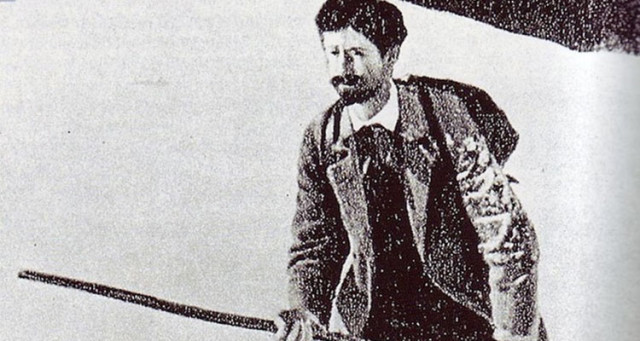What is the history of skiing? The answer is not simple. You do not have definite news about the origins of this activity, what is certain is that skiing is part of the history of the Nordic peoples since time immemorial? In all likelihoods, the skis are one of the oldest means of locomotion.
A significant testimony to this effect is represented by an incision rock found on the island of Norwegian Rodoy. This etching is clearly visible in a human-like figure wearing skis. In Siberia, Scandinavia and Lapland were then made of the fossils that demonstrate how the skis existed since ancient times.
The history of skiing for begins much later, it seems that our first fellow to wear skis was a bishop of Ravenna, Francesco Negri (1623-1698), who went to Lapland during the second half of the seventeenth century. The prelate, in his literary work entitled Journey North and published a few years after his death, describes the skis: ” Two tablets thin, not exceeding in width foot, long eight or nine palms, with the tip somewhat taken not to damage the snow. ”
There is no other news related to the skis until 1886, when Edward Martinori (1854-1935), numismatist and Roman engineer, returning from a trip to Lapland earth brought a pair of skis that represented a genuine curiosity about the people of the time.
It was a literary work of a Norwegian scientist and explorer, Fridtjof Nansen, published in 1890, to discover the remarkable utility in moving from skis coated in snow-covered places, the work of Nansen, who described his journey of about 500 km with Ski carried out in Greenland, contributed significantly to the spread of this useful means of locomotion.
The equipment used by Nansen for the fulfillment of his remarkable resort is preserved in the Museum of Skiing in Oslo The skis were wooden planks until the first half of 1800, since then have followed numerous technical innovations that still remain. It is through these innovations that skiing has become a real sport. The first official competition seems to date back to 1860, and was organized in Oslo at the initiative of the Norwegian king who put the cup up for grabs Holmenkollen.
Always goes back to the late 1800s the use of sticks that contributed to the birth of the so-called alternating step that was the only technique used in cross-country skiing until the birth of the skating technique, pioneered by a Finnish Pauli Siitonen. The skater was used in sport at the 1976 Winter Olympics held in Austria, was the American Bill Koch to adopt it; Kock went up that year on the second step of the podium.
The first ski tours date back to the late 1800s. The credit can be attributed to a Swiss engineer, Adolf Kind, who in 1897, during a holiday in Piedmont at some friends, he showed some of his evolutions on skis. They are friends of the early pioneer’s Kind ski resorts, and it is to them that we owe the birth of the first ski clubs.
A special mention goes to the first of these clubs: Ski Club Ponte Nossa, born in Bergamo in October 1901, two months later came the Ski Club Torino and in 1902, the first units were formed of skiers that were inserted into the regiments of Alpine. These departments contributed significantly to the spread of cross-country skiing. In 1908 came the Winter Sports Federation (FIS) FIS currently manages the vast majority of ski disciplines.











